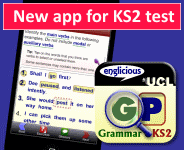Explanation
Adjectives are typically placed before a noun or after verbs such as be, seem and appear.
The surest way to identify adjectives is by the ways they can be used:
- before a noun, to make the noun’s meaning more specific (i.e. to modify the noun), or
- after the verb be, as its complement.
- The pupils did some really good work. [adjective used before a noun, to modify it]
- Their work was good. [adjective used after the verb be, as its complement]
Adjectives cannot be modified by other adjectives. This distinguishes them from nouns, which can be.
Adjectives are sometimes called “describing words” because they pick out single characteristics such as size or colour. This is often true, but it doesn’t help to distinguish adjectives from other word classes, because verbs, nouns and adverbs can do the same thing.
Not adjectives:
- The lamp glowed. [verb]
- It was such a bright red! [noun]
- He spoke loudly. [adverb]
- It was a French grammar book. [noun]
See also: adjective phrase, possessive adjective.
Englicious contains many resources for English language in schools, but the vast majority of them require you to register and log in first. For more information, see What is Englicious?

